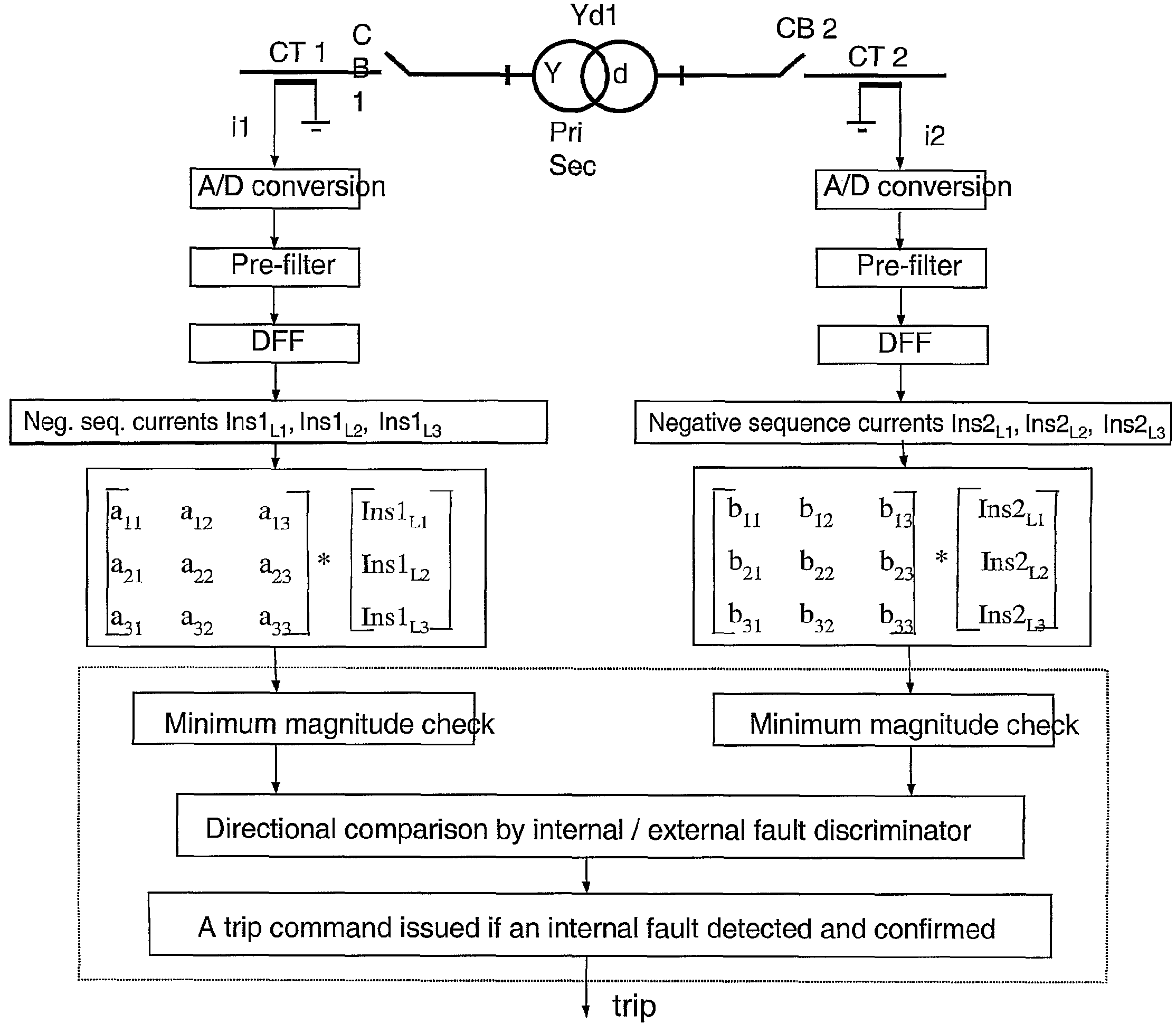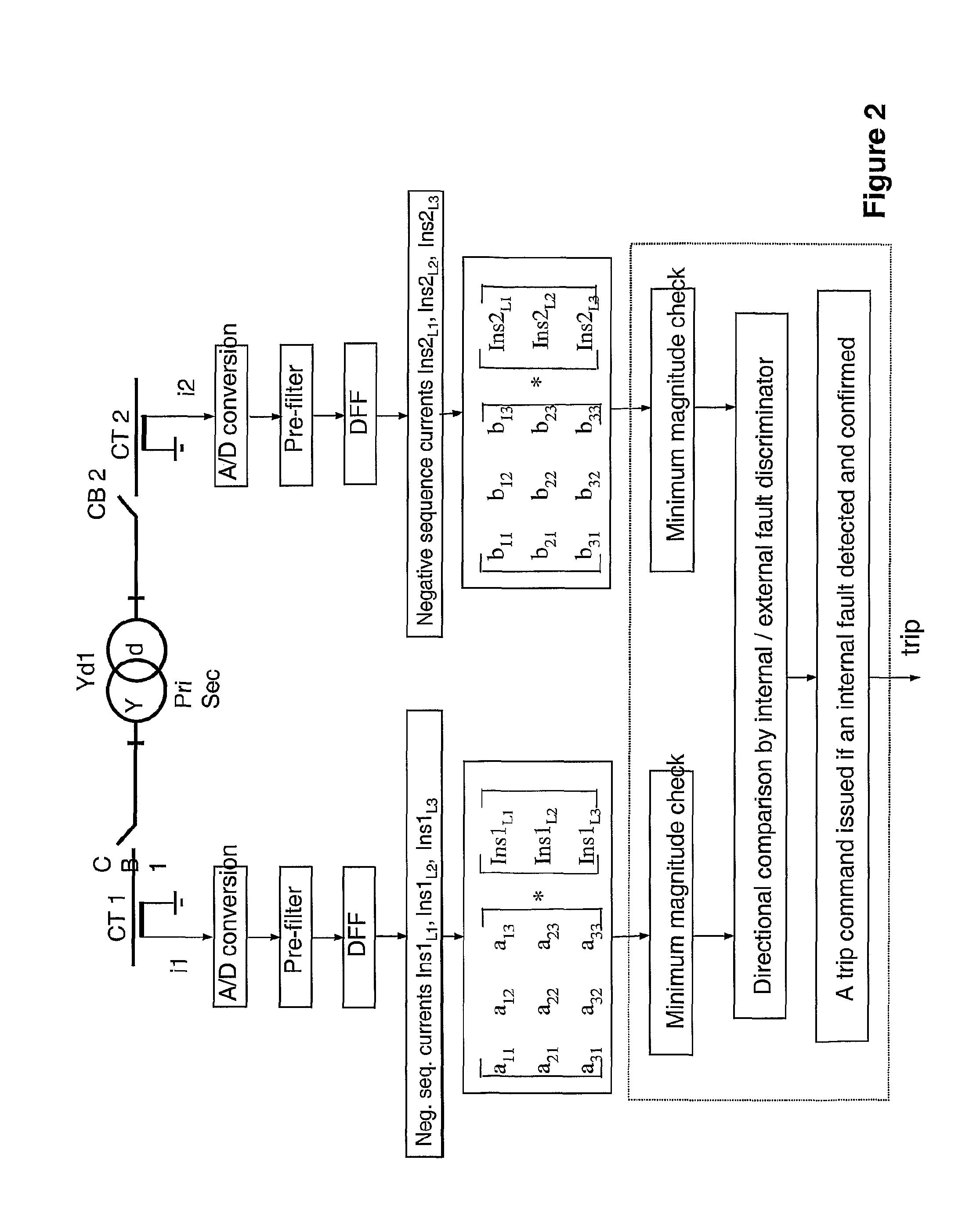Method and device for fault detection in transformers or power lines
a transformer and fault detection technology, applied in the direction of fault location, emergency protective circuit arrangement, instruments, etc., can solve the problems of widespread consequences, troublesome and costly for the electrical power supplier, etc., to achieve efficient detection of faults in power transformers and sensitive response
- Summary
- Abstract
- Description
- Claims
- Application Information
AI Technical Summary
Benefits of technology
Problems solved by technology
Method used
Image
Examples
Embodiment Construction
[0032]In FIG. 1 is illustrated an internal / external fault discriminator for protection of power transformers. The fault discriminator is made on pairs of components of the total negative sequence differential current. This discriminator may be implemented as a complement to the normal power transformer differential protection.
[0033]The internal / external fault discriminator determines the position of the source of the negative sequence fault currents with respect to the protected zone. If the source of the negative sequence fault currents is found to be outside the protection zone, then the fault is external.
[0034]If the source is found to be inside the zone, the fault is internal. The position of the negative sequence current source is determined as follows. At an internal fault, a degree of negative sequence differential current appears, and its two components (for a two-winding power transformer) are of the same direction, i.e. out of the protection zone.
[0035]At an external fault...
PUM
 Login to View More
Login to View More Abstract
Description
Claims
Application Information
 Login to View More
Login to View More - R&D
- Intellectual Property
- Life Sciences
- Materials
- Tech Scout
- Unparalleled Data Quality
- Higher Quality Content
- 60% Fewer Hallucinations
Browse by: Latest US Patents, China's latest patents, Technical Efficacy Thesaurus, Application Domain, Technology Topic, Popular Technical Reports.
© 2025 PatSnap. All rights reserved.Legal|Privacy policy|Modern Slavery Act Transparency Statement|Sitemap|About US| Contact US: help@patsnap.com



